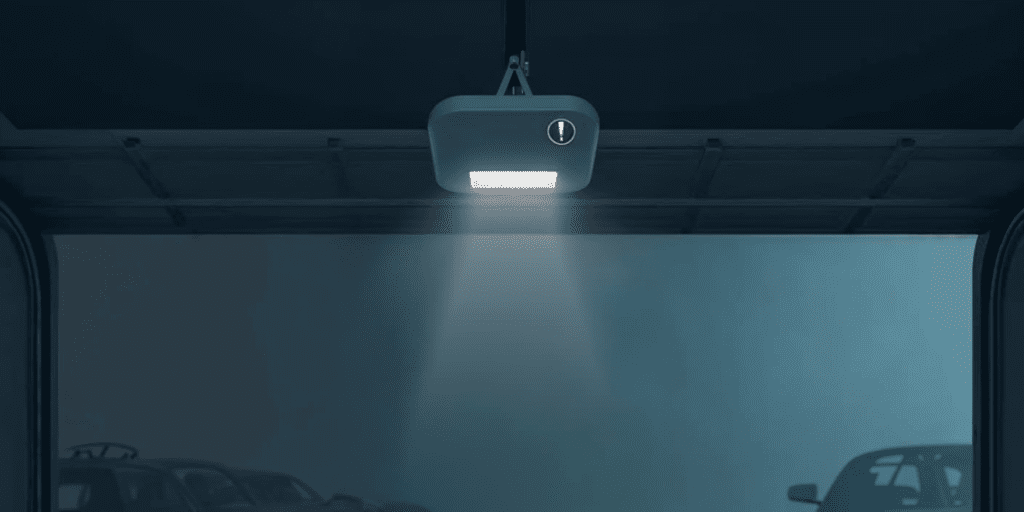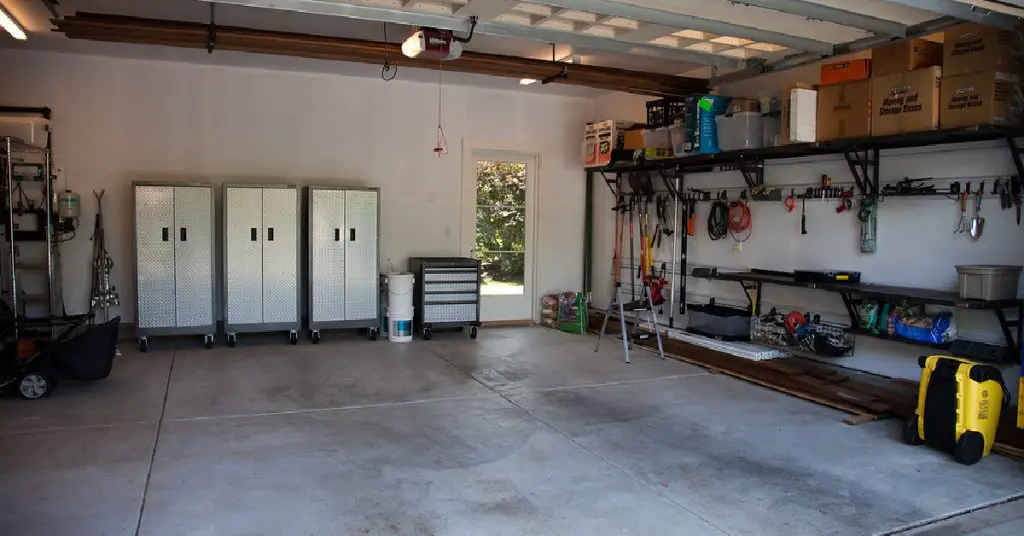That mysterious beeping from your garage door opener can drive anyone up the wall. Whether you’ve got a Liftmaster, Chamberlain, or another brand, we’ll help you decode those beeps and fix them fast.

Key Takeaways:
- Most beeping patterns indicate battery or power-related issues
- 2-second beeps = running on battery power
- 30-second beeps = low/dead battery or backup power
- Regular maintenance and battery checks prevent most problems
- 75% of beeping issues are battery/power-related
- Backup batteries last ~24 hours and need replacement every 1-2 years
Quick Relief: Stop That Beeping Now!
Before we dive deeper, here’s a fast fix to silence that noise:
- Unplug your garage door opener
- Remove the backup battery
- Plug the opener back in
- Get ready to tackle the root cause
Understanding Those Beeps: What Your Garage Door Is Telling You
Every 2-Second Beeping Pattern
When your Liftmaster or Chamberlain garage door opener beeps every 2 seconds with an orange LED light, it’s running on battery power. This happens when:
- Your home lost power
- The power outlet failed
- The circuit breaker tripped
- The power cord got damaged
Every 30-Second Beeping Pattern
A beep every 30 seconds? Check the LED light:
- Flashing orange = Low battery alert
- Solid red = Dead battery needs replacement
- Solid orange = Running on backup power
Smart System Signals
Modern garage door openers use different beeping patterns for WiFi connectivity:
- Single beep = WiFi mode activated
- Three slow beeps = Network connection in progress
- Three quick beeps = WiFi settings cleared
Battery Backup Basics
Your garage door’s backup battery:
- Lasts about 24 hours on standby
- Powers up to 20 door cycles
- Needs replacement every 1-2 years
- Shows warning signs before failing
According to service data, 75% of beeping issues link to battery or power problems. A properly maintained backup battery system prevents most emergency calls.
Power Problems and Solutions
1. No Power to Opener
- Check your circuit breaker
- Test the outlet with another device
- Look for damaged power cords
- Verify GFCI hasn’t tripped
2. Battery Replacement Steps
- Get a compatible 12V battery
- Disconnect power
- Open the battery compartment
- Switch red and black wires to new battery
- Test the system
3. Smart Features and Connectivity
Modern openers pack advanced features:
- MyQ technology for remote control
- Real-time status updates
- Security monitoring
- Power loss alerts
Safety First: When Beeping Means Danger
Sometimes beeping warns about safety issues:
- Blocked safety sensors
- Misaligned beams
- Objects in the door’s path
- System malfunctions
Regular Maintenance Tips
Keep your garage door opener happy:
- Test backup battery quarterly
- Clean safety sensors monthly
- Check power connections
- Listen for unusual sounds
When to Call the Pros
Some situations need expert help:
- Electrical problems
- Complex sensor issues
- Failed circuit boards
- Safety system failures
Brand-Specific Notes
Liftmaster and Chamberlain
These brands share similar features:
- Battery backup systems
- WiFi connectivity
- MyQ compatibility
- Advanced security features
Other Major Brands
Guardian, Genie, and Craftsman use different:
- Beeping patterns
- Battery systems
- Warning signals
- Troubleshooting steps
Pro Tips for Prevention
- Mark your calendar for battery checks
- Keep spare batteries handy
- Know your manual release
- Save emergency contacts
Common Questions Answered
Why Does My Garage Door Opener Beep After a Power Outage?
It’s telling you it switched to battery power. Check your power supply and circuit breaker.
The Beeping Won’t Stop Even With a New Battery?
Test your power outlet and verify proper battery installation.
The Bottom Line
Most garage door opener beeping signals easy-to-fix issues. Follow our guide to silence those beeps and keep your system running smoothly. For stubborn problems, don’t hesitate to call a professional – your safety matters more than a DIY fix.


